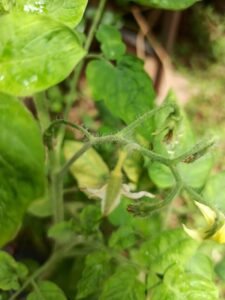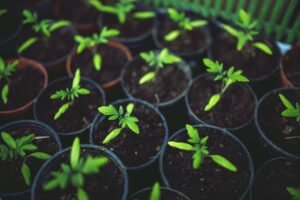Straw Bale Gardening Problems
Straw bale gardening has gained popularity in recent years due to its many benefits. It allows you to grow a variety of plants without the need for soil, making it ideal for small spaces or areas with poor soil quality. However, like any gardening method, it comes with its own set of challenges. In this article, we will discuss the most common straw bale gardening problems and how to overcome them.
Straw bale gardening is a unique way to grow plants without the need for soil. While it has many advantages, there are also some common problems that gardeners may encounter. Let’s explore these problems and how to overcome them.
Problem 1: Overheating and Water Retention
Overheating and water retention are common problems in straw bale gardening, especially during the summer months. The causes of overheating and water retention are often related to the straw bale’s structure and placement.
Symptoms of overheating and water retention include dry soil and wilted plants. To prevent these problems, it is important to keep the straw bale moist and place it in a shaded area. You can also use a drip irrigation system to keep the bale moist without overwatering.

Problem 2: Nutrient Deficiencies
Straw bales do not contain the same nutrients as soil, which can lead to nutrient deficiencies in plants. Symptoms of nutrient deficiencies include yellowing leaves and stunted growth.
To overcome nutrient deficiencies, you can add fertilizers and other nutrients to the straw bale before planting. You can also use compost tea or fish emulsion to add nutrients throughout the growing season.

Problem 3: Pests and Diseases
Straw bale gardening is not immune to pests and diseases-
Common pests in straw bale gardening include aphids, mites, and slugs, while diseases like powdery mildew and blight can also affect plants. Symptoms of pests and diseases include yellowing leaves, spots on leaves, and wilting plants.
To prevent and treat pests and diseases, you can use organic pest control methods like neem oil or insecticidal soap. You can also practice crop rotation and sanitation to prevent the spread of diseases.
Problem 4: Weed Growth
Weed growth is another common problem in straw bale gardening. Weeds can compete with plants for nutrients and water, leading to stunted growth and reduced yield.
To prevent and control weed growth, you can cover the straw bale with mulch or weed fabric. You can also use a hoe or hand-pull weeds as soon as they appear.

Problem 5: Structural Integrity of Straw Bale
The structural integrity of the straw bale can also be a problem in straw bale gardening. If the bale starts to break down or collapse, it can affect the plant’s growth and stability.
To maintain the structural integrity of the straw bale, it is important to keep it dry and protected from rain. You can also add a layer of plastic or tarp to prevent moisture from seeping into the bale.
Problem 6: Uneven Decomposition
Uneven decomposition can occur in straw bale gardening if the bale is not properly conditioned before planting. This can lead to uneven moisture levels and nutrient distribution, affecting plant growth.
To promote even decomposition, it is important to condition the straw bale with nitrogen-rich fertilizers and water for at least two weeks before planting. You can also turn the ball over to distribute moisture and nutrients evenly.
Problem 7: Availability and Cost of Straw Bales
Straw bales may not always be available or affordable, which can be a problem for gardeners who want to try straw bale gardening. However, there are alternatives like hay bales or compost bins that can be used instead.
In conclusion, straw bale gardening is a unique and innovative way to grow plants without soil. While it has its own set of challenges, these can be overcome with proper maintenance and care. By understanding the common problems in straw bale gardening and their solutions, you can enjoy a bountiful and fruitful harvest in your straw bale garden.
Common problems that can arise Straw Bale Gardening
Temperature Fluctuations Straw bales can be sensitive to temperature fluctuations, particularly during the early stages of plant growth. If the weather is particularly hot or cold, you may need to take additional steps to protect your plants. Consider using shade cloth or row covers to protect your plants from extreme temperatures.
- No-Dig Gardening for Beginners: A Simple Guide to Growing Healthy Plants Without Tilling
- Best Knee Pads for Gardening 2023: Protecting Your Knees While You Tend to Your Garden
- Best Vertical Gardening Systems 2023- The Ultimate Guide to Grow Your Garden Upwards
- Best Indoor Garden Design: A Guide to Growing a Thriving Indoor Garden
- Best Plant Care Top Tips for a Disease-Free Garden
Can I reuse the same straw bale for multiple growing seasons?
Yes, you can reuse the same straw bale for up to two growing seasons if it is still structurally sound.
Can I use any type of straw bale for gardening?
It is best to use wheat straw bales as they decompose slower and contain fewer weed seeds.
Can I add fertilizers and other nutrients to the straw bale to prevent nutrient deficiencies?
Yes, you can add fertilizers and other nutrients to the straw bale before planting or throughout the growing season.
Do I need to water the straw bale garden more frequently than traditional soil gardening?
Yes, you may need to water the straw bale garden more frequently as straw bales tend to dry out faster than soil.
Can I grow any plant in a straw bale garden?
Most plants can be grown in a straw bale garden, but some may require more nutrients or support than others. It is best to research the specific needs of the plants you want to grow before planting.
Discover more from Organic Gardening
Subscribe to get the latest posts sent to your email.





